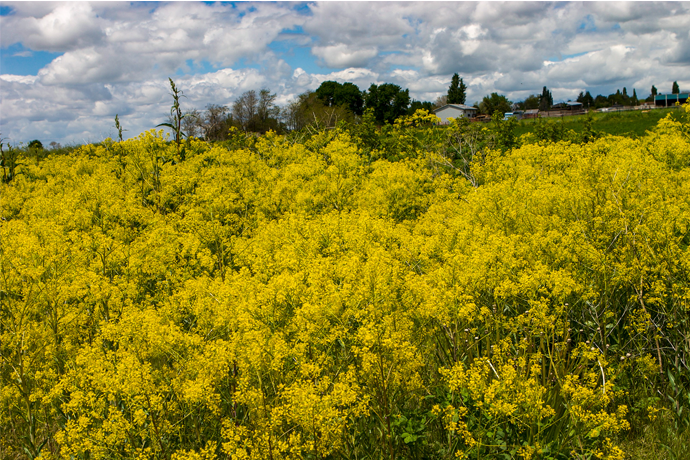
The Utah Department of Agriculture and Food has awarded Utah State University’s Department of Plants, Soils and Climate a $36,000 grant for work on medusahead and invasive mustard species.
This research will investigate how and when seeds of these invasive species germinate as well as their life cycle patterns, crucial information to use in developing practices to control their spread. Both medusahead and mustard species are found throughout Utah and provide great fuel for summer wildfires. Invasive plants involved in this study include elongated mustard – commonly known as dyer’s woad - garlic mustard, and African mustard.
Associate Professor Corey Ransom serves as principal investigator on the new grant.
“This grant is tied to invasive species funding,” said Ransom. “It’s aimed to help people manage and control these species statewide, and similar research to what this grant money will be used for has aided in the production of new herbicides.” 
The plants involved in this study are currently in the early detection phase of invasion, which can still be properly managed given the right information, which is where this research will be useful.
“Who wants to see the red rock and wildflower landscape in St. George turn to a thick thatch of invasive grasses and mustards?” said Natalie Fronk, a graduate student doing fieldwork on this project. “Or the foothills around Park City and in Cache Valley become overrun by ugly yellow weeds?”
Fronk will assist Ransom in conducting greenhouse, lab, and field trials across the state at sites of infestation to compare treatments and treatment timings.
“What I love about this research is that it’s very personal to everyone in the state of Utah,” said Fronk. “I think we can all agree that we don’t want any more invasive mustards establishing and spreading throughout our state.”

